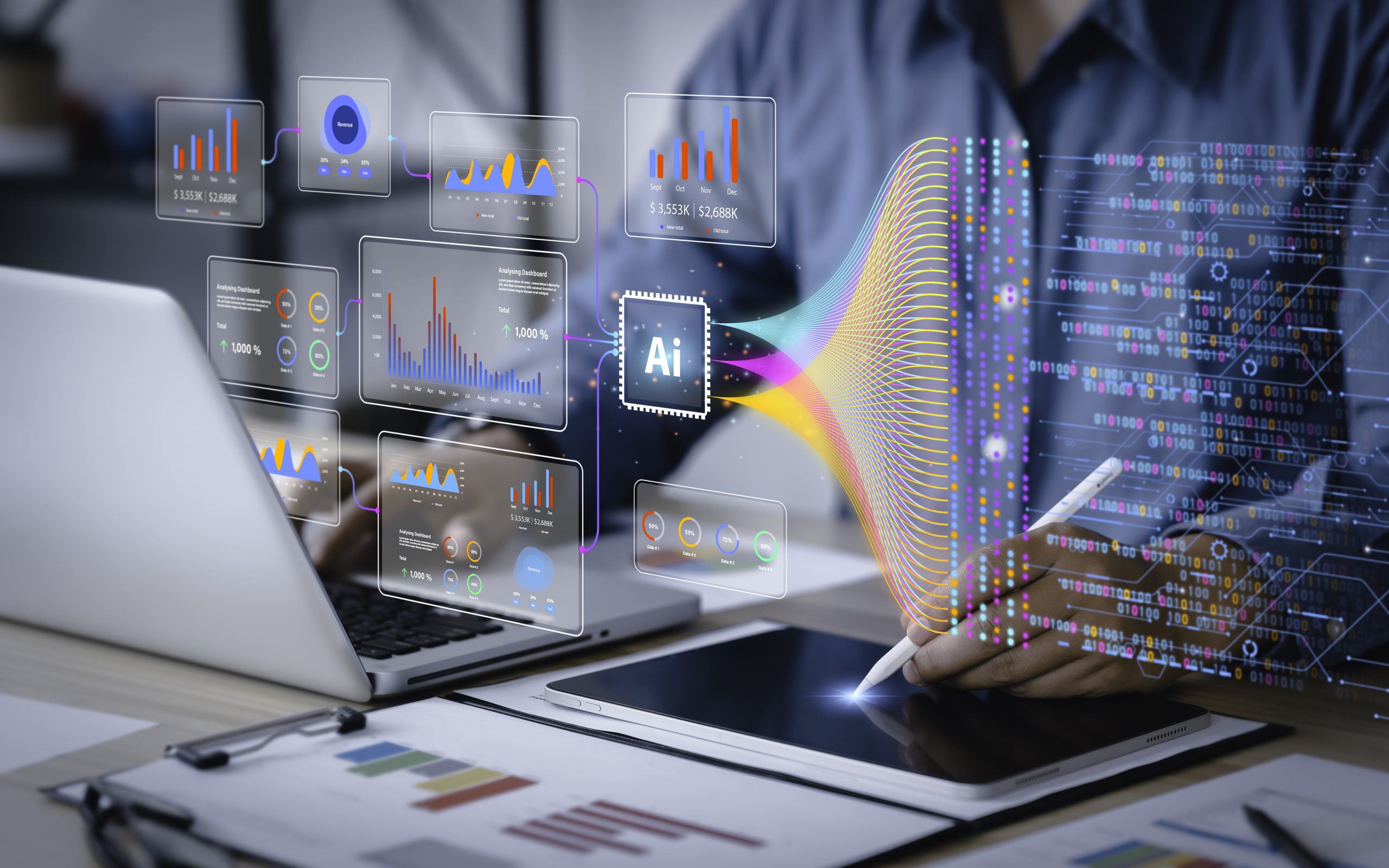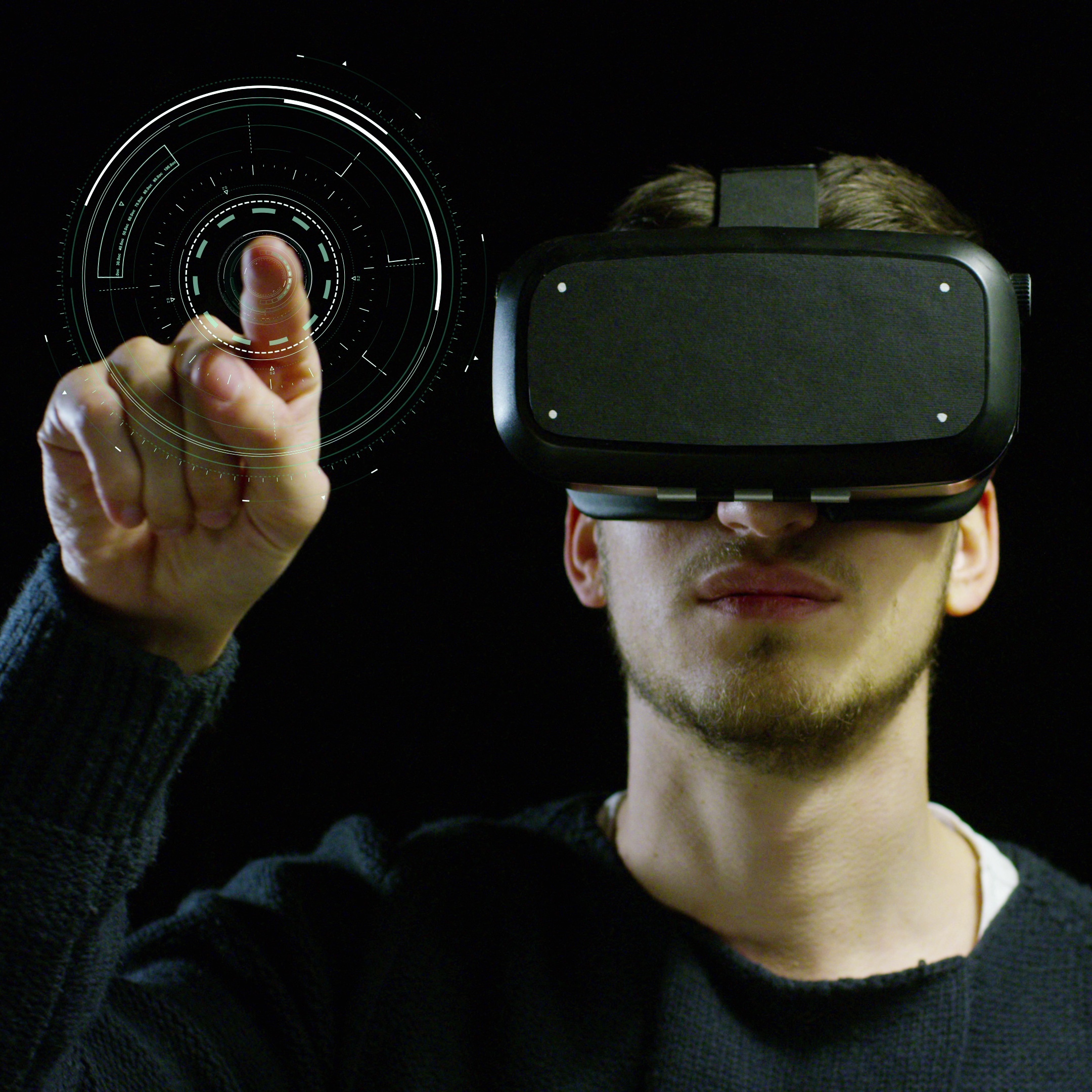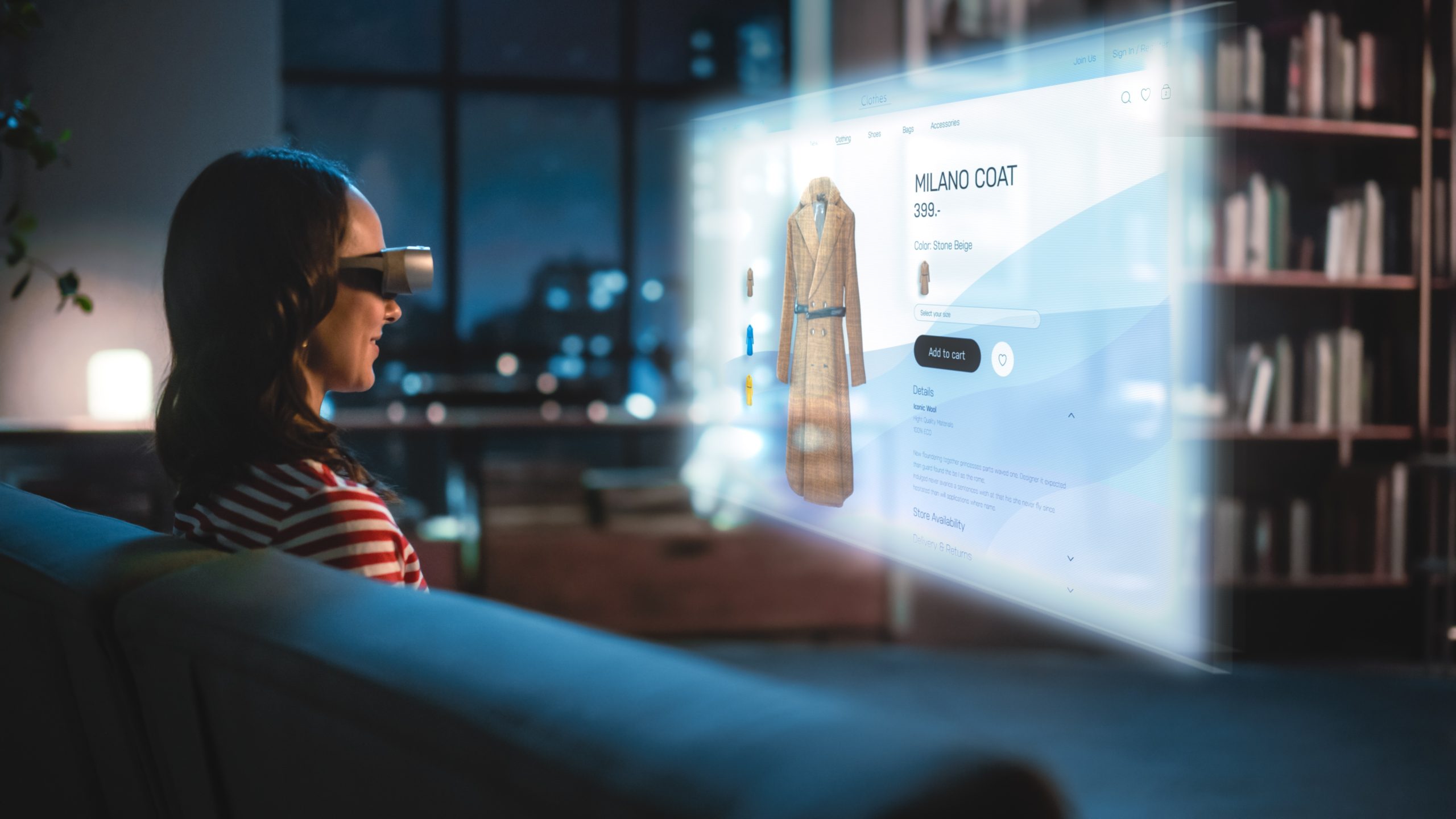Top 10 Gen AI trends poised to shape the future of experience center design
Experience centers today do much more than showcase products and services. The addition of Generative AI has made these spaces responsive and personalized, changing how visitors interact with exhibits and information.
The old model of static displays and fixed presentations gives way to something new. Today’s experience centers blend tech and human elements to create meaningful spaces for each visitor. Gen AI helps these centers understand visitor preferences and adjust their content accordingly.
We’re seeing practical changes in how these spaces work. Gen AI connects digital systems with the physical environment, giving designers new ways to create experiences that feel natural and relevant.
Let’s get into the top 10 Gen AI trends for XCs that are making a notable difference around the globe.
- Hyper-Personalization
Visitor data analysis through Gen AI enables personalized experiences in experience centers. By processing information about interests, industry background, and behavior patterns, the system creates tailored content for each person. This targeted approach replaces generic presentations with relevant, customized interactions.
Tech in Focus
Carvana, an online platform for buying and selling used cars, launched a ” Joyride ” project that produced over 1.3 million unique AI-generated videos to celebrate visitor car purchases. Each video is personalized with details such as the visitor’s name, the car’s make and model, and relevant current events, creating a unique and engaging experience for each buyer.
How To Use This at Your Experience Centre
Advanced personalization capabilities go beyond basic welcome messages. The system can recognize visitors and customize each exhibit based on their background. For instance, when a manufacturing executive visits, the AI can highlight relevant smart factory solutions and suggest immersive VR experiences that match their interests. The technology adjusts content depth based on visitor expertise and generates custom takeaways that reflect what each visitor found most valuable during their time at the center.
- AI-Powered Virtual Assistants
Virtual assistants powered by Generative AI enhance visitor support in experience centers. They provide real-time assistance, guiding visitors through intricate processes and answering queries conversationally, thus making visits smoother.
Tech in Focus
Amazon’s Alexa shows how AI assistants can handle everyday interactions naturally. It understands regular speech, manages tasks and gives personal recommendations based on what each user likes. In experience centers, we see this same tech at work in places like Expo 2020, where AI-powered robot guides handle everything from basic directions to detailed exhibit explanations.
How To Use This at Your Experience Centre
Experience centers need quick help with simple questions and detailed guidance on complex topics. AI assistants handle the basics like directions and scheduling, letting employees focus on meaningful conversations. At India Energy Week, magineu’s interactive robots served as pavilion hosts and guided visitors through exhibits with informative interactions. This demonstrated how AI support complements human interactions. Each interaction helps the system deliver more accurate, timely information.
- Augmented Reality (AR) Integration
Another significant Gen AI trend shaping XCs is how augmented reality is being reimagined. Gen AI takes AR beyond fixed 3D models. It creates and adjusts virtual content in real time as visitors interact with it. It’s an AR that responds to you—changing what you see based on your interests and how you move through the space.
Tech in Focus
Burberry’s AR shopping tool, built with Google, shows how this works in practice. Shoppers pull up any product in 3D, seeing exactly how it looks from every angle. The AR adjusts to their environment’s lighting and space, giving them a true-to-life view of what they’re buying. This simple change has helped customers make better choices and reduce returns.
How To Use This at Your Experience Centre
AR doesn’t have to be static displays or pre-made content. At BPCL, magineu created an AR table where visualizations respond to visitor movements and interests. The Gen AI system creates and updates 3D content in real time, adjusting the experience as people interact with it. When visitors gather around the table, they see information that makes sense from their position and respond to their questions, making data easy to understand and explore.
- Predictive Analytics
Among emerging Gen AI applications in experience centers, predictive analytics stands out for its ability to understand visitor behavior before it happens. By looking at how people move through spaces and interact with exhibits, the system spots patterns showing who’s just browsing and who’s interested. This helps spaces adjust to visitor flow, optimize visitor experience, and let teams focus on where it matters most.
Tech in Focus
Harley Davidson uses an AI program called Albert to demonstrate this. Albert analyzes visitor behavior to identify those who are serious about buying. It picks up small signs that most people might miss, helping sales teams identify those who need more information or support. Instead of treating every visitor the same, sales teams can spend time with people ready for detailed conversations.
How To Use This at Your Experience Centre
Knowing who needs attention makes a big difference in busy experience centers, especially B2C spaces with high foot traffic. The AI watches how long people spend at different exhibits, which displays they return to, and what questions they ask. This helps employees know who’s ready for a deeper conversation about products or services. It’s beneficial in public spaces where you might have hundreds of visitors but need to focus on those most interested in what you offer.
- Enhanced Multi-Sensory Experiences
The evolution of Gen AI in XC design is particularly evident in how we approach sensory experiences. It facilitates the development of multi-sensory experiences beyond just what visitors see. It engages visitors on various levels by combining sound, visuals, and movement to create memorable interactions and keep visitors engaged. Instead of static displays, exhibits respond to people with coordinated light, sound, and motion—strengthening the emotional connection with the brand and making the whole experience feel more natural and interesting.
Tech in Focus
Visa shows how small sensory details matter. Their distinct “transaction sound” gives shoppers instant confirmation that their payment worked. This auditory cue also provides comfort and consistency for cardholders, reinforcing feelings of trust and security associated with successful purchases. BMW takes this further with its iX Flow concept, where AI creates changing color patterns on car surfaces matched with specific sounds. These aren’t just fancy effects—they help people understand what’s happening without needing to read instructions or watch screens.
How To Use This at Your Experience Centre
Smart exhibit design uses sound and motion to draw people in naturally. When someone walks near an exhibit, AI adjusts the lighting, plays subtle sounds, or triggers small movements to catch their eye. As more people gather, the system changes these elements to match the energy in the room. Everything works together through one control system, so different exhibits don’t compete for attention. These subtle cues help guide visitors through your space without them feeling pushed or pulled in any direction.
- Sustainability in Design
Sustainability, a growing focus in Gen AI trends for experience centers, helps spaces run cleaner and smarter by suggesting sustainable options for experience center design. It looks at how spaces use energy, what materials work best, and where resources might be wasted. By testing different scenarios, it finds the most eco-friendly ways to reduce energy use and waste without affecting the visitor experience.
Tech in Focus
Microsoft’s Experience Centre shows how this works in practice. Their AI system watches visitor patterns and adjusts lighting and temperature automatically. When fewer people are in an area, lights dim, and cooling reduces. When crowds move through, the system responds. This simple but smart approach has cut their energy use by 20%.
How To Use This at Your Experience Centre
When designing or updating your space, AI can suggest materials that last longer and need less upkeep. It monitors how different areas use energy throughout the day and adjusts systems automatically. The technology also helps plan future improvements by showing which changes would impact both sustainability and operating costs. It’s about making smart choices that are good for the environment and the daily operations.
- Data-Driven Insights
As XCs adopt more Gen AI tools, data-driven insights become increasingly valuable. The technology connects online and offline visitor behaviors, creating a complete picture of how visitors research before they arrive, what catches their attention during the visit, and what they follow up on later. This helps create a more complete understanding of what different visitors find useful.
Tech in Focus
Retail platforms like Swym show what’s possible when you connect online and physical experiences. The system remembers what products someone looked at online and shares this information with in-store staff. Experience centers can use this approach to understand visitor interests before walking through the door.
How To Use This at Your Experience Centre
When someone visits your website before visiting the center, AI notes what interests them. This helps guides prepare relevant examples and demos ahead of time. The system also spots patterns, such as which exhibits attract certain visitors or when different spaces get the most use. For return visitors, it remembers their past interests and helps pick up conversations where they left off. This makes each visit more useful, whether it’s someone’s first or fifth time.
- Seamless Integration with IoT
Gen AI uses sensors and smart devices to make experience centers more intuitive. Connecting physical and digital elements helps spaces understand how visitors interact with exhibits and respond in helpful ways. No complex interfaces or special instructions are needed—everything works.
Tech in Focus
Amazon Go shows this idea by maximizing the retail experience with its cashier-less stores, utilizing IoT technology to create a seamless shopping process. Customers enter the store, pick items off the shelves, and walk out. Sensors and cameras track purchases automatically, charging customers through their Amazon accounts without needing traditional checkout lines, thus enhancing convenience and efficiency.
How To Use This at Your Experience Centre
When someone spends time at an exhibit, sensors note their interest, and AI helps them understand this. If they’re looking at technical displays, the system might note they’re interested in detailed information. If they’re testing interactive elements, it shows they prefer hands-on learning. This data helps improve both immediate interactions and future visits. It also gives precise numbers on which exhibits attract attention and how different spaces perform throughout the day.
- Interactive Content Creation
Content creation represents one of the most versatile Gen AI applications in XC design. These tools enable experience centers to produce customized AR/VR experiences tailored to individual visitors’ preferences. This personalization enhances engagement and makes each visit unique.
Tech in Focus
Nike’s House of Innovation shows how personal this can get. During their Air Max Pulse launch, AI created custom sound and visual combinations for each person trying on shoes. The system turned a simple try-on into a memorable moment, giving each visitor their mini-show. BuzzFeed uses a simpler version of this idea with personalized quizzes, which often go viral. These quizzes encourage users to share their results on social media, significantly increasing brand visibility and user interaction. For instance, quizzes like “Which Disney Character Are You?” entertain and provide insights into user preferences.
How To Use This at Your Experience Centre
Every product demo can be different based on who’s watching. When someone interacts with an exhibit, AI adjusts the content to match their interests and reactions. It could be changing the technical detail level, switching examples to match their industry, or creating a custom recap they can take home. Physical products come alive with digital elements that respond to visitor actions. These aren’t just presentations—conversations between your space and visitors.
- AI-Generated Visual Design
Gen AI design tools like Stable Diffusion help create the visual elements that make experience centers memorable. From floor patterns to wall art, these tools generate ideas designers can refine into finished installations.
Tech in Focus
Stable Diffusion shows how AI can spark creative design ideas. Give it a description of what you need—like “modern tech-inspired floor pattern” or “historical timeline mural,” for example—and it generates starting points that designers can develop further using tools like Adobe Creative Suite. This speeds up the design process while keeping human creativity at the center.
How To Use This at Your Experience Centre
AI can enhance every visual element in your space. Use it to generate ideas for floor patterns that guide visitors, create striking wall graphics, or design themed installations that tell your story. At BPCL, for example, magineu used this approach to create photo installations and earth-themed artwork that brought the brand’s history to life. Similarly, at IEW, AI-assisted graffiti on porthole exhibits showed visitors a glimpse of “life in 2050,” making the space meaningful and photo-worthy. Each element, from subtle floor designs to eye-catching glass installations, works together to create memorable spaces visitors want to share.
Bottom Line
Right now, somewhere, a visitor is walking into an experience center. They may be looking at a new car, exploring a tech product, or learning about sustainable energy. They might not notice how Gen AI is quietly making their visit better—not through flashy displays or obvious tech, but through minor, thoughtful improvements in how the space responds to them.
The beauty of good design lies in what you don’t see. These Gen AI trends in experience center design show that when the technology works well, visitors don’t marvel at it; instead, they find what they need more easily, understand products more clearly, and leave with better answers to their questions.
That’s the real story here—not the technology itself, but how it fades into the background, making space for what matters most: people’s better understanding of things, confident decisions, and experiences worth remembering.
Of course, implementing these AI solutions isn’t simple. It requires a deep understanding of both technology and experience design. Common challenges include integrating AI with existing systems, ensuring data privacy, maintaining consistent performance, and avoiding the ‘tech for tech’s sake’ trap. Plus, there’s the essential task of training staff to work effectively alongside AI tools.
This is where magineu’s experience makes a difference. We’ve spent years refining the balance between innovative technology and practical application in experience centers. Our team understands how to implement Gen AI thoughtfully, ensuring it enhances rather than overshadows the human experience.
Connect with us to understand how magineu can help you create such unforgettable experiences.



